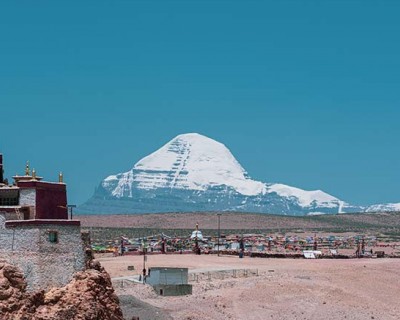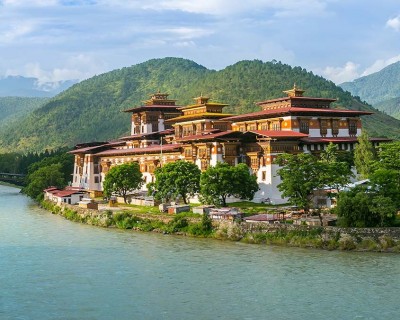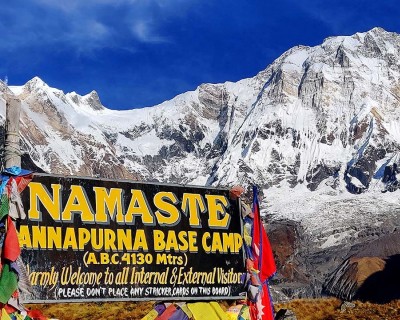Annapurna Circuit Trek in Autumn Season
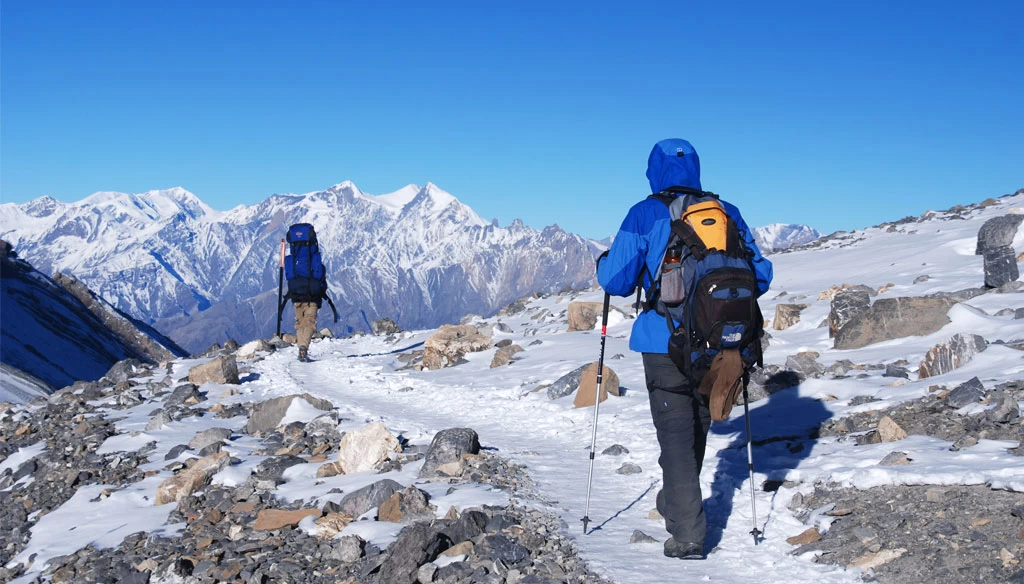
When it comes to Himalayan expeditions and trekking adventures, autumn is considered to be the number 1 season. Among the candidate seasons of the best time for Annapurna Circuit Trek, the autumn season takes home the trophy with its stable weather conditions, moderate temperature, fresh monsoon rain-washed landscapes, and breathtaking views of the Himalayas with the vibrant-colorful landscapes of the fall season on the foreground.
The temperature of the Annapurna region is around 14°C to 18°C in the daytime during the autumn seasons, and you can expect the temperature to drop to minus degrees at the higher altitudes during the nighttime. If you are planning your Himalayan adventure during the latter part of the autumn season (i.e., late- November), you can expect light snowfall during your trekking adventure at the alpine altitude (i.e., above 4,000 meters). Let’s check out some of the major highlights of the number one season for trekking adventure in the Himalayas.
Highlights of the Autumn Season
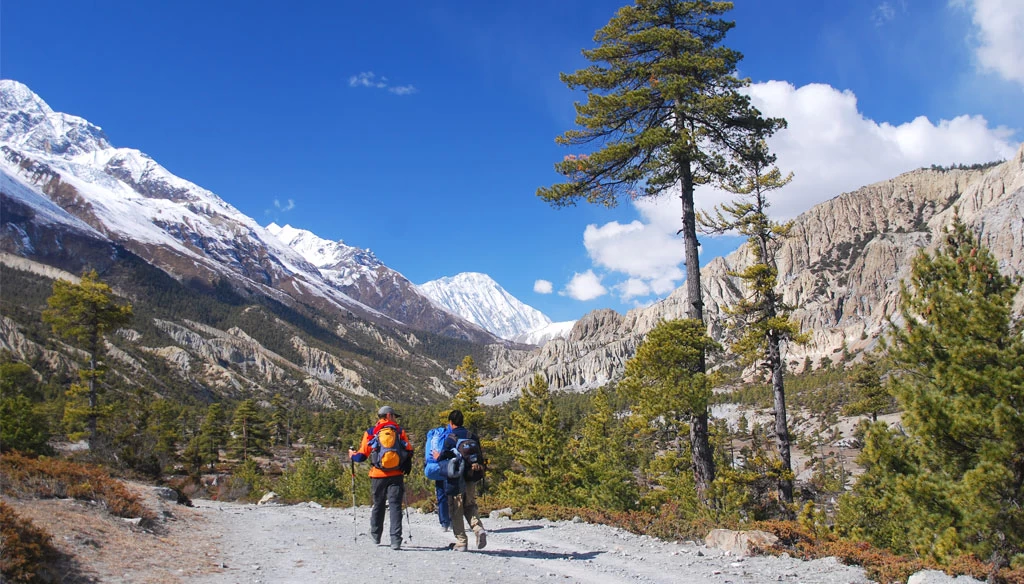
Just Perfect Climatic Conditions
One of the reasons why autumn is the most beloved season and considered to be the best time for Annapurna Circuit Trek is due to its just perfect climatic conditions. Despite having stable weather conditions with a low probability of snowfall and rainfall, the autumn season has just the right temperature for outdoor adventures, not too hot nor too cold.
Trekkers are accompanied by fresh and chill breezes in the morning and night to start and end the trekking adventures on high notes. Also, you won’t sweat as much as you would during the summer, making your day-to-day long hours of trekking experience feel lighter and more comfortable.
Clear Mountain Views
Due to less precipitation during the autumn season, there is less chance of rainfall, and the trekking trails are usually dry. The skies are generally clear, and you will be able to catch the most epic glimpse of the Himalayan vistas on every day of your adventure. In this time frame, which is considered the best time for Annapurna Circuit Trek, you will be rewarded with the magical unobstructed views of the sparkling white snow figurines under clear blue skies throughout your trekking route.
Vibrant Landscapes
One of the best things about doing the trek in autumn, the best time for Annapurna Circuit Trek; besides the clear- stunning views of the mountain, the landscapes of the region are colorful and vibrant. In the fall season, which sees the transformation of the landscapes from lush greenery to riot colors, you will be able to witness diverse shades of color from red, orange, brown, and yellow.
This stunning landscape that tells the tale of the cycle of mother nature is simply spectacular, and it creates a picturesque environment, blending well with vibrant shades. You won’t be able to witness such unique magnificence of the region in any other season besides autumn.
Less Crowded Trekking Route
Even though autumn is a peak season and one of the best times for Annapurna Circuit Trek, this season sees relatively fewer trekkers compared to spring. This means that you will be able to enjoy the tranquil and peaceful ambiance of the Himalayas away from the crowds.
Thanks to the less crowded trekking route, you will have a more personalized experience as there are no queues or hassles during the booking for food and accommodations at the teahouses. You will also have the opportunity to take your time with the local interaction and, at the same time, enjoy the stunning natural surroundings of the region with a sense of solitude.
Cultural Experience
If you haven’t done trekking or visited this beautiful Himalayan country previously, you might not be familiar with the festivals in autumn. Besides being the harvest season, Nepal celebrates some of the grandest festivals during this fall season, like Dashain, Tihar, Chhath, Mani Rimdu, and Indra Jatra.
The colorful festival of the autumn also contributes to making this season the best time for Annapurna Circuit Trek. Doing this trek in the autumn season will add a cultural dimension to your adventure, and you will get the opportunity to witness as well as participate in the local festival celebrations.
Less Insect Activities
As the temperature starts to gradually drop in the autumn season, there are fewer insect activities on your trekking trail. This is another reason why autumn is the best time for Annapurna Circuit Trek: the decreasing numbers of mosquitoes, insects, and other bugs make your trekking experience more enjoyable. You don’t have to worry about rashes and infections caused by these annoyances during your trekking period.
Also, the leeches, which are famous for terrorizing the lower trekking trails, aren’t active in the rainy seasons. From mid-September, the trekking routes are almost completely free of leeches and other bugs, saving you from the inconvenience of dealing with these small irritating factors of the trek.
Read this next:
Annapurna Circuit Trek in Spring Season
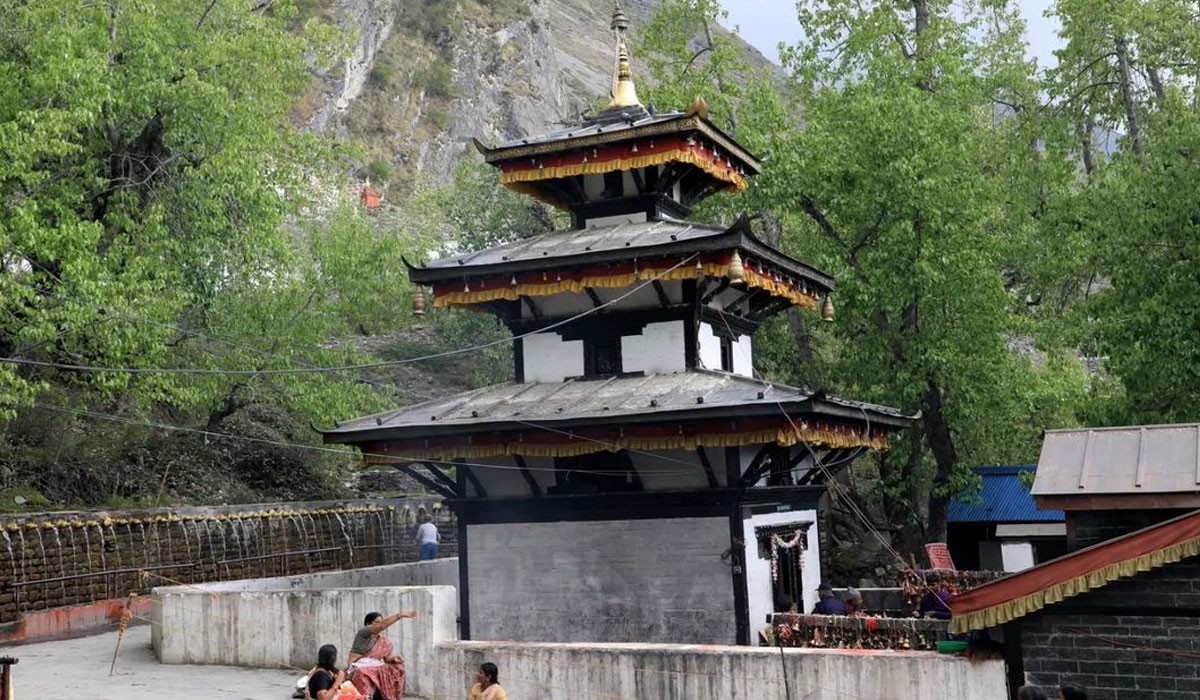
Trekking during the spring season, a peak season, and another contender for the best time for Annapurna Circuit Trek offers unique sets of advantages. This season is especially popular for its natural allurements; the entire lower region of the Himlayas is covered with lush landscapes during the spring season.
You will be greeted with the dotted rhododendrons and other wildflowers in your trekking trails, and wherever you look, you will witness the stunning landscapes brimming with life as nature is at its prime. The temperature of the Annapurna region is around 15°C to 22°C during the daytime, and the night temperature can drop upto -5°C.
You can expect the temperature at the aline degree to be in minus degrees during the early mornings and nights, so if you are doing the Annapurna Circuit Trek in this season, make sure to pack accordingly. Let's check out the unique prospects doing this trek in the spring season that will make your Himalayan adventure an exhilarating experience.
Mild Temperatures
In the spring season, which ranks second as the best time for Annapurna Circuit trek, you will be accompanied by moderately warm temperatures. Although the morning and evening temperatures are not as chilly as the autumn season, spring is far apart from the freezing winter cold and summer heat. As it is a tad bit warmer than the autumn, you will still feel experience comfortable temperatures at the higher altitudes, making it easy for you to deal with the alpine environment.
So, if you are not that fond of cold-chilly climatic conditions, you can do this Himalayan expedition during the spring season. Also, due to the warmed climatic conditions, you will have it easy to acclimatize to the high altitudes during your trekking adventure.
Blooming Trails
The national flower of Nepal is the rhododendron, and during the spring season, this beautiful, vibrant flower covers the entire lower trekking route of the region. The prime season of nature also sees the blooming of a diverse range of wildflowers; your trekking trail will be decorated with stunning visual elements of different shades of colors like pink, red, yellow, and white.
Traversing across the colorful landscapes, with the clear views of the Himalayas under the blue sky, will almost seem like you have entered an enchanted land. Whether you are trekking across densely forested areas, high Himalayan passes, or the alpine meadows, the overall aesthetics of the trekking trails in this season are simply breathtaking.
Wildlife Viewing and Photography
During the spring season, the high-altitude wildlife are most active; you will have higher chances of encountering the endangered species in the conservation area in spring than in other seasons. Popular among nature lovers as the best time for Annapurna Circuit Trek, you can also take your time birdwatching; diverse species of migratory birds flock in the region to enjoy the nectar of nature at its prime.
The stunning visual elements of different colors in the spring seasons offer the opportunity for the perfect snapshots. You can expect diverse shades of color of the spring in the foreground and the stunning sparkling snowcapped figurines in the background, making every one of your shots seem like it is fresh out of a fairy tale.
Longer Daylight Time
The days in the autumn season start getting shorter as it closes in the winter; however, for your Himalayan exploration in the spring season, you will be able to enjoy longer daylight hours. Longer daylight time means you can take it easy with your exploration; instead of worrying about rushing with the itinerary, you will have a lot of time to take short breathers, just relishing the magnificence of the high Himalayan region.
You will be able to maximize the experience of your trek in this season, which is known as the best time for Annapurna Circuit Trek. You will be able to witness the beauty of the highlights of adventure in different lighting conditions if you have longer hours of trekking. Furthermore, even during the long days of trekking in the spring season, you won’t have to use your headlights during the final stretches; the longer daylight hours will guide you safely to your destinations.
Perfect Camping Season
Spring isn’t the best time for Annapurna Circuit Trek just for its lush- remarkable natural allurements, but it also makes up the perfect time for the outdoor adventure. If you are fond of outdoor camping, spring is the season that you want to explore the region like a true explorer. The camping sites have the most suitable conditions for camping in the spring season, far from the wet trekking trails of the summer and the freezing temperatures of the winter.
You will be able to make the most out of your trekking experience on the fresh and lush landscapes of this season, of course, surrounded by the stunning visual of different shades in nature’s peak season. The night temperatures are milder even at the higher altitudes, so you will be able to enjoy camping outdoors throughout the trekking trail and ending your everyday adventures on a high note, gazing at the stars.
Comfortable Clothing Options
As the temperature of the spring season is warmer compared to autumn and spring but not hot in the summer season, you will have the luxury of choosing comfortable clothing options for your trekking adventure. This works out best for the trekkers who want to travel light, making it the best time for Annapurna Circuit Trek, where you don’t need to carry heavy clothes and gear.
Even at the alpine altitudes, you can easily manage with a comfortable, warm jacket; you don’t need a heavy down jacket to fight the cold. Also, with comfortable clothing during the trekking part, where light clothes are sufficient, you will travel cozy and make the best out of the experience.
Annapurna Circuit Trek Difficulty
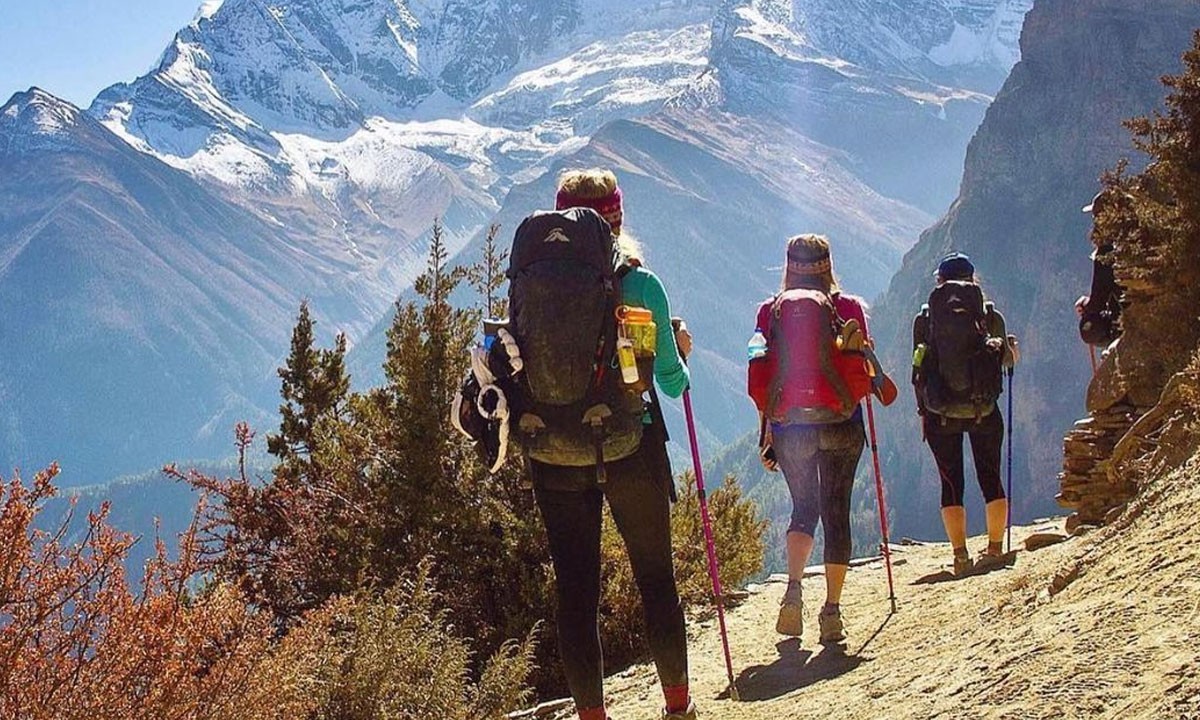 The Annapurna Circuit Trek is a mainstream trekking route in the Himalayas, if you are interested in doing this trek, you will able to easily overcome the ‘moderate’ difficulty level of adventure with adequate preparation. If you have good health condition and a basic level of fitness, you can easily complete this expedition without a hitch. The overall success rate of this epic adventure in the Himlayas is 97%, so if you are determined to do this trek and ready to put in some effort for the preparation part, you will be able to make the best out of this Himalayan exploration.
The Annapurna Circuit Trek is a mainstream trekking route in the Himalayas, if you are interested in doing this trek, you will able to easily overcome the ‘moderate’ difficulty level of adventure with adequate preparation. If you have good health condition and a basic level of fitness, you can easily complete this expedition without a hitch. The overall success rate of this epic adventure in the Himlayas is 97%, so if you are determined to do this trek and ready to put in some effort for the preparation part, you will be able to make the best out of this Himalayan exploration.
However, the Annapurna Circuit Trek is still a high-altitude Himalayan exploration and nothing like a hike in the backyard. So, you shouldn’t underestimate this adventure and slack out on the preparation part. This Himalayan adventure takes you an elevation point above 4,000- 5,000 meters, and there are risks of altitude sickness for the human body at an altitude above 2,500 meters. Pisang (3,240 meters), Manang (3,50 meters), Ya Kharka (4,120 meters), and Thorung Phedi (4,560 meters) are some of the altitude jump points in your adventure, and Thorung La Pass (5,416 meters) is the highest elevation point of this entire adventure.
Thus, you need to make sure you acclimatize properly to the new altitude points, enjoy a slow-paced adventure, and stay on the lookout for the symptoms of altitude sickness. Similarly, the overall trekking distance of this adventure is around 160 to 230 km, meaning you will trek for about 6- 7 hours during the trekking days of your adventure on average. Furthermore, Annapurna Circuit Trek is a remote exploration; you will trek on the rugged, secluded trails of the Himalayan region, and services and amenities in the region are not top-tier like a luxurious vacation destination. So you have to consider all these factors and make adequate preparations for the best value experience during your Himalayan exploration.
Annapurna Circuit Trek Outline Itinerary
Day 1: Drive to Bhulbule (923m, 7-8 hrs drive)
Day 2: Trek to Chamje (1410m, 5-6 hours trek)
Day 3: Trek to Bagarchhap (2160m, 5 – 6 hours trek)
Day 4: Trek to Chame (2710m, 6-7 hours trek)
Day 5: Trek to Lower Pisang (3240m, 5 to 6 hours trek)
Day 6: Trek to Manang (3540m, 5 to 6 hours trek)
Day 7: Acclimatization day at Manang
Day 8: Trek to Yak Kharka (4120m, 4 hours trek)
Day 9: Trek to Thorung Phedi (4,560m, 4 to 5 hours trek)
Day 10: Over Thorung La (5,416m) to Muktinath (3,802m, 8.5 hours trek)
Day 11: Trek to Kagbeni (2840m) and to Jomsom (2720m, 2-3 hours trek)
Day 12: Drive down to Tatopani (1190m, 2-3 hours drive)
Day 13: Trek to Ghorepani (2750m, 8 hrs trek).
Day 14: Trek up to Poonhill and Trek down to Nayapul, then drive to Pokhara (5 hours trek, 1.5 hrs drive)
Day 15: Drive back to Kathmandu (7 hrs drive)
Our Annapurna Circuit Trek Package
Package Cost: USD 1325 per person
View Package Detail: Annapurna Cirucit Trek
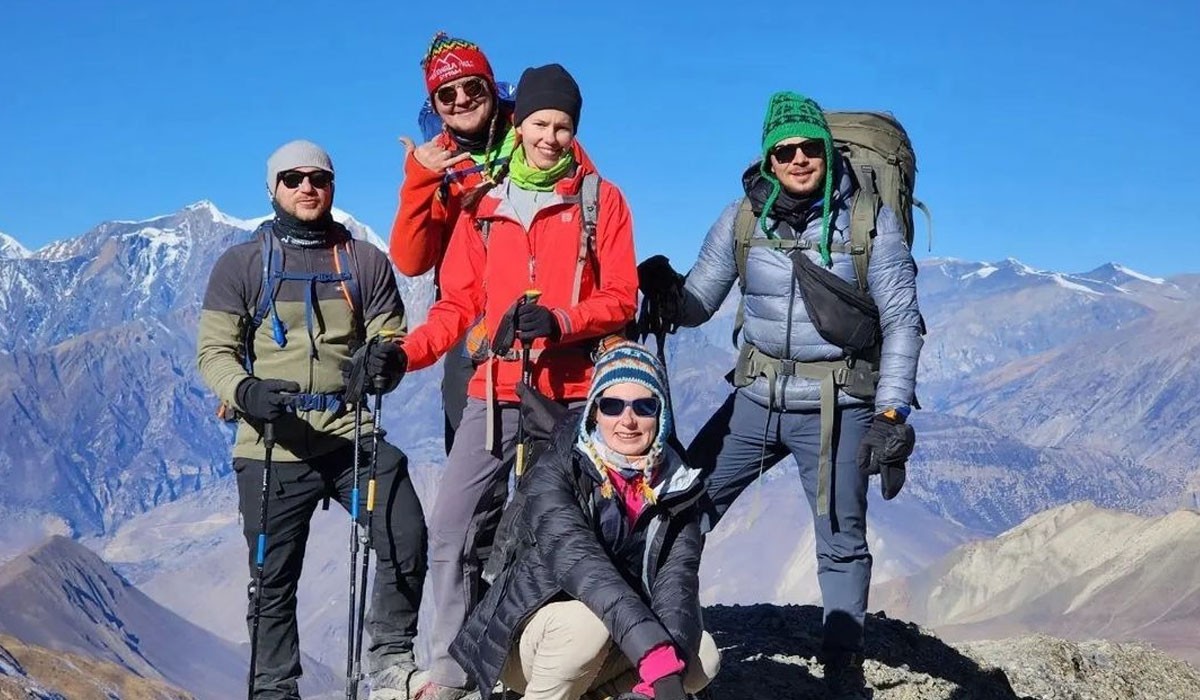






 The Annapurna Circuit Trek is a mainstream trekking route in the Himalayas, if you are interested in doing this trek, you will able to easily overcome the ‘moderate’ difficulty level of adventure with adequate preparation. If you have good health condition and a basic level of fitness, you can easily complete this expedition without a hitch. The overall success rate of this epic adventure in the Himlayas is 97%, so if you are determined to do this trek and ready to put in some effort for the preparation part, you will be able to make the best out of this Himalayan exploration.
The Annapurna Circuit Trek is a mainstream trekking route in the Himalayas, if you are interested in doing this trek, you will able to easily overcome the ‘moderate’ difficulty level of adventure with adequate preparation. If you have good health condition and a basic level of fitness, you can easily complete this expedition without a hitch. The overall success rate of this epic adventure in the Himlayas is 97%, so if you are determined to do this trek and ready to put in some effort for the preparation part, you will be able to make the best out of this Himalayan exploration.